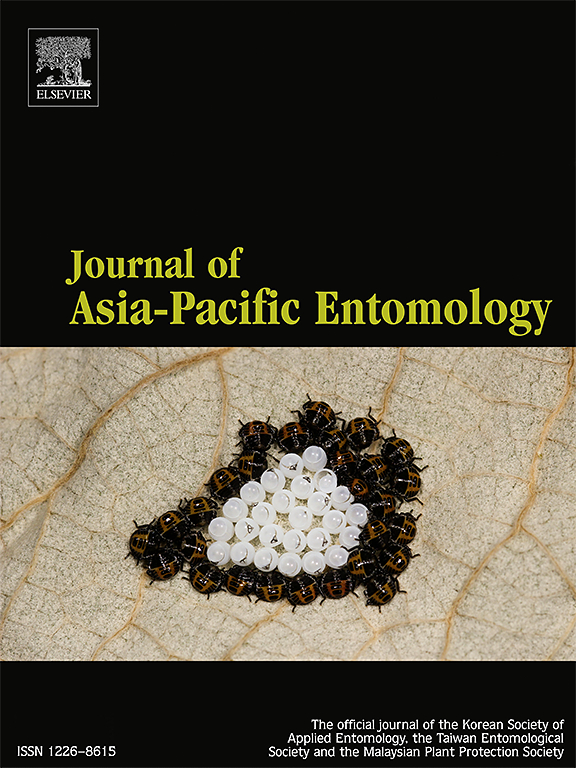昆虫养殖可持续性分析;泰国南部种植西米棕榈象甲(Rhynchophorus ferrugineus)案例研究
IF 1.3
3区 农林科学
Q3 ENTOMOLOGY
引用次数: 0
摘要
本研究对泰国北大年省的一个中等规模商业西米棕榈象鼻虫农场进行了详细分析。它侧重于农业技术、可持续性、成本分析和碳足迹计算。养殖设置包括使用塑料容器进行育种,并利用西米棕榈锯末和商品猪饲料作为基质。幼虫在受控条件下饲养,典型的生产周期为45天,每个容器产0.5至0.7公斤幼虫。每公斤幼虫的生产成本计算为113.6泰铢,即3.4美元,售价为200泰铢,每公斤净利润为86泰铢,每周期约为43,000泰铢,即1274.1美元。可持续性分析显示,该农场的碳足迹主要由猪饲料和能源消耗驱动,估计每年的碳足迹总量为8,041.25千克二氧化碳当量。结果表明,每千克幼虫的碳足迹约为2.71千克二氧化碳当量,低于传统家畜。这项研究强调了西米棕榈象鼻虫养殖的经济可行性及其对环境的影响,提出了可持续性实践的潜在改进领域。本文章由计算机程序翻译,如有差异,请以英文原文为准。

Sustainability analysis of insect farming; case study of farming sago palm weevil (Rhynchophorus ferrugineus) in southern Thailand
This study provides a detailed analysis of a medium-scale commercial sago palm weevil farm in Pattani province, Thailand. It focuses on farming techniques, sustainability, cost analysis, and carbon footprint calculation. The farming setup includes the use of plastic containers for breeding and utilizes sago palm sawdust and commercial pig feed as substrates. The larvae are reared in controlled conditions, with a typical production cycle of 45 days yielding 0.5 to 0.7 kg of larvae per container. The production cost per kilogram of larvae was calculated at 113.6 THB i.e. 3.4 USD, with a selling price of 200 THB, resulting in a net profit of 86 THB per kilogram, or approximately 43,000 THB i.e. 1274.1 USD per cycle. Sustainability analysis revealed that the farm’s carbon footprint is primarily driven by pig feed and energy consumption, with a total estimated annual carbon footprint of 8,041.25 kg CO2e. The carbon footprint per kilogram of larvae turned out to be approximately 2.71 kg CO2e which is lower than the conventional livestocks. This study highlights the economic viability of sago palm weevil farming and its environmental impact, suggesting areas for potential improvements in sustainability practices.
求助全文
通过发布文献求助,成功后即可免费获取论文全文。
去求助
来源期刊

Journal of Asia-pacific Entomology
Agricultural and Biological Sciences-Insect Science
CiteScore
2.70
自引率
6.70%
发文量
152
审稿时长
69 days
期刊介绍:
The journal publishes original research papers, review articles and short communications in the basic and applied area concerning insects, mites or other arthropods and nematodes of economic importance in agriculture, forestry, industry, human and animal health, and natural resource and environment management, and is the official journal of the Korean Society of Applied Entomology and the Taiwan Entomological Society.
 求助内容:
求助内容: 应助结果提醒方式:
应助结果提醒方式:


